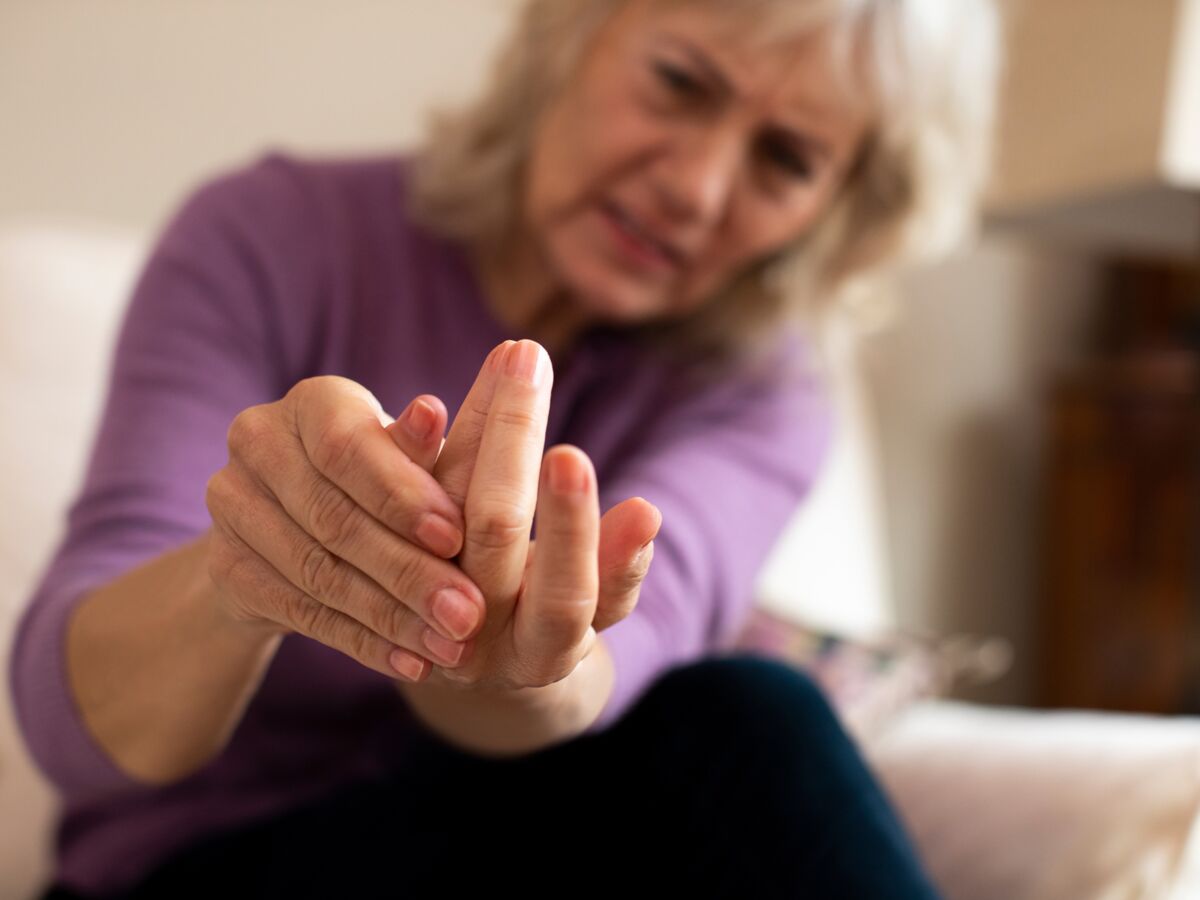In people of a certain age (particularly over the age of fifty), joint pain and stiffness as well as difficulty walking or even swelling of a joint suggest osteoarthritis. It is nevertheless necessary to confirm this diagnosis using x-rays which allow it to be visualized.
1. The main symptoms of osteoarthritis
The symptoms of osteoarthritis will be the first warning sign that will lead you to consult the doctor. It is by describing them that the practitioner will be able to begin to discuss the diagnosis of osteoarthritis. They often appear in people aged between 40 and 60 (statistically, more often in men before 40 and mainly in women between 40 and 70). Note that almost everyone presents osteoarthritis around the age of 80 and that only 50% of people in experience the symptomssays the MSD Manual.
Pain is the first symptom of osteoarthritis, knowing that it appears gradually or during particular constraints (carrying loads for example). It has certain characteristics. First of all, it is a mechanical pain, that is to say it occurs when moving (as opposed to inflammatory pain which can appear even at night when resting, as in cases of arthritis for example. ). The joint is therefore more painful at the end of the day after being used.
In addition, it is associated with stiffness which leads to discomfort and a reduction in joint range of motion. This loss of amplitude increases as osteoarthritis progresses (remember that osteoarthritis is a chronic arthropathy, and therefore progressive, but in an unpredictable manner).
The doctor will also try to find out if this stiffness is present upon waking (or after a period of inactivity) and requires joint relief for more than 30 minutes. It is usually improved after muscular awakening. Note that pain on palpation or when moving the joints passively is only observed when osteoarthritis is already at an advanced stage.
Deformities can be a second symptom of osteoarthritis. They are especially visible when it is the fingers that are affected. They may be accompanied by swelling, particularly in the knee area. The swelling can result from an inflammatory reaction (which can come from the bone, ligaments, tendons or components of the joint: the capsule or the synovial membrane), with effusions which will contribute to the characteristic joint deformation osteoarthritis.
2. Medical imaging to diagnose osteoarthritis
X-rays are essential elements in the diagnosis of osteoarthritis. They make it possible to directly observe the joints and any lesions. We will be interested in:
- the joint space, reduced in cases of osteoarthritis: the space which separates the two bones at the joint and which should normally leave an empty space (black on the x-ray), the two bones must not touch each other;
- the structure of the bone: possible destruction of the bone under the articular cartilage is assessed;
- an expansion (osteophyte): we look to see if the bone has developed at the bone-cartilage junction (which is frequently observed at the vertebral level with parrot’s beaks).
3. A blood test to distinguish osteoarthritis from arthritis
Osteoarthritis is not a pathology that is reflected by blood markers. Therefore, a blood test is unnecessary. However, it helps to remove doubts and distinguish osteoarthritis from arthritis. Remember that arthritis is an inflammatory disease of the joints and that, as such, it results in particular by an increase in the sedimentation rate or C-reactive protein.
4. Diagnosis of osteoarthritis: the importance of auscultation
On the other hand, the location can constitute a diagnostic element, knowing that the joints most affected are:
- in the hands: the interphalangeal joints (joint between the phalanges of the fingers) and the thumb joint (in 20% of cases of hand osteoarthritis);
- at the level of the foot: the metatarsophalangeal joint (between the tarsus and the phalanges of the toes);
- at the level of the spine: especially the cervical and lumbar vertebrae (with the frequent consequence of cervico-brachial neuralgia or moderate sciatica);
- the hip (very symptomatic when carrying loads) with sometimes pain felt in the groin or outside of the thigh;
- the knee (cartilage loss is rapid and leads to instability responsible for pain in the ligaments and tendons).
In case of swelling in the knee, a synovial fluid analysis allows us to rule out other possibilities such as inflammatory rheumatism, underlines the website of Doctor Philippe Paillard.
Sources
MSD Manual, Website of Dr Philippe Paillard
Read also :
⋙ Osteoarthritis: 30 solutions to suffer less
⋙ Cervical osteoarthritis: causes, symptoms and treatments of this inflammatory pathology
⋙ Joint pain: the different possible causes
